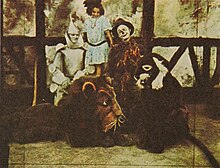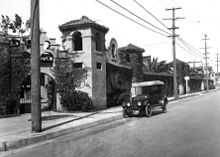The Fox Film Corporation was an American independent film production studio formed by William Fox (1879–1952) in 1915, by combining his earlier Greater New York Film Rental Company and Box Office Attraction Company.

The Motion Picture Patents Company, founded in December 1908 and effectively terminated in 1915 after it lost a federal antitrust suit, was a trust of all the major US film companies and local foreign-branches, the leading film distributor and the biggest supplier of raw film stock, Eastman Kodak. The MPPC ended the domination of foreign films on US screens, standardized the manner in which films were distributed and exhibited within the US, and improved the quality of US motion pictures by internal competition. It also discouraged its members' entry into feature film production, and the use of outside financing, both to its members' eventual detriment.
The year 1909 in film involved some significant events.
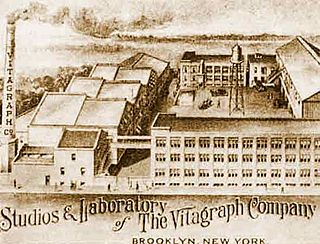
Vitagraph Studios, also known as the Vitagraph Company of America, was a United States motion picture studio. It was founded by J. Stuart Blackton and Albert E. Smith in 1897 in Brooklyn, New York, as the American Vitagraph Company. By 1907, it was the most prolific American film production company, producing many famous silent films. It was bought by Warner Bros. in 1925.

The Biograph Company, also known as the American Mutoscope and Biograph Company, was a motion picture company founded in 1895 and active until 1916. It was the first company in the United States devoted entirely to film production and exhibition, and for two decades was one of the most prolific, releasing over 3000 short films and 12 feature films. During the height of silent film as a medium, Biograph was the most prominent U.S. film studio and one of the most respected and influential studios worldwide, only rivaled by Germany's UFA, Sweden's Svensk Filmindustri and France's Pathé. The company was home to pioneering director D. W. Griffith and such actors as Mary Pickford, Lillian Gish, and Lionel Barrymore.

Francis Winter Boggs was an American stage actor and pioneer silent film director. He was one of the first to direct a film in Hollywood.

William Nicholas Selig was a vaudeville performer and pioneer of the American motion picture industry. His stage billing as Colonel Selig would be used for the rest of his career, even as he moved into film production.

Edison Studios was an American film production organization, owned by companies controlled by inventor and entrepreneur, Thomas Edison. The studio made close to 1,200 films, as part of the Edison Manufacturing Company (1894–1911) and then Thomas A. Edison, Inc. (1911–1918), until the studio's closing in 1918. Of that number, 54 were feature length, and the remainder were shorts. All of the company's films have fallen into the public domain because they were released before 1928.

The Lubin Manufacturing Company was an American motion picture production company that produced silent films from 1896 to 1916. Lubin films were distributed with a Liberty Bell trademark.
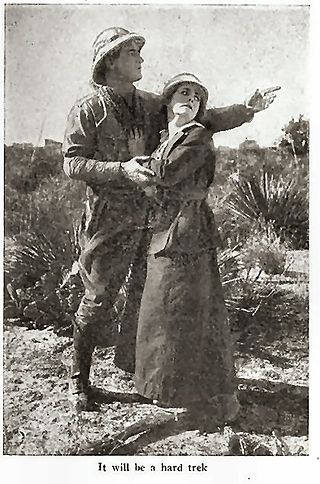
The Adventures of Kathlyn (1913) is an American motion picture serial released on December 29, 1913, by the Selig Polyscope Company. An adventure serial filmed in Chicago, Illinois, its thirteen episodes were directed by Francis J. Grandon from a story by Harold MacGrath and Gilson Willets and starred Kathlyn Williams as the heroine. Harold MacGrath's novel of the same title was released a few days later in January 1914, so as to be in book stores at the same time as the serial was playing in theaters.

Kathlyn Williams was an American actress, known for her blonde beauty and daring antics, who performed on stage as well as in early silent film. She began her career onstage in her hometown of Butte, Montana, where she was sponsored by local copper magnate William A. Clark to study acting in New York City. She later appeared in numerous films between 1910 and 1932 before retiring from acting. Williams died of a heart attack in Los Angeles at age 81.
Edendale is a historical name for a district in Los Angeles, California, northwest of Downtown Los Angeles, in what is known today as Echo Park, Los Feliz and Silver Lake. In the opening decades of the 20th century, in the era of silent movies, Edendale was known as the home of most major movie studios on the West Coast. Among its many claims, it was home to the Keystone Cops, and the site of many movie firsts, including Charlie Chaplin's first movie, the first feature-length comedy, and the first pie-in-the-face. The Edendale movie studios were mostly concentrated in a four-block stretch of Allesandro Street, between Berkeley Avenue and Duane Street. Allesandro Street was later renamed Glendale Boulevard.
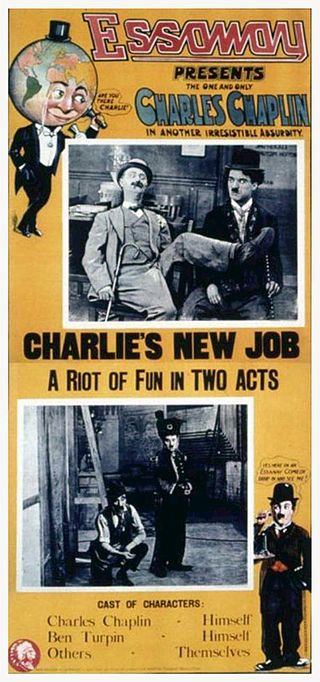
The Chicago film industry is a central hub for motion picture production and exhibition that was established before Hollywood became the undisputed capital of film making. In the early 1900s, Chicago boasted the greatest number of production companies and filmmakers. Essanay Studios founded by George K. Spoor was one of the earliest successful studios to produce movies in Chicago, employing stars such as Charlie Chaplin and Gloria Swanson. Actor and co-founder of Essanay Studios, Broncho Billy Anderson gave birth to the western genre. Early film companies such as Essanay Studios produced multiple silent films every week and rented viewing equipment to showcase the latest cinematography to the public. This rental culture gave birth to the popularity of Nickelodeons up until the Great Depression. However, due to the high demand for motion pictures during this time, a black market for films and equipment developed. The Motion Picture Patents Company, established in 1909 as a conglomerate of the major studios, sought to eliminate all illegal use of patented film equipment. As a result, independent ventures entered the film scene. Independents drove the film industry to the west to avoid legal trouble with the trust of major film companies united under the Motion Picture Patents Company. The west offered fairer weather and scenery that better accommodated film making. Not until the 1980s and early 21st century has Chicago experienced a film production revival. Blockbusters, such as Blues Brothers, Sixteen Candles, and The Dark Knight, have rejuvenated the Chicago film scene.
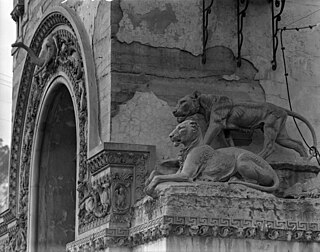
The Selig Zoo in Los Angeles, California was an early 20th century animal collection managed by Col. W.N. Selig for use in Selig Polyscope Company films and as a tourist attraction. Over the years the zoo was also known as the Luna Park Zoo, California Zoological Gardens, Zoopark, and, eventually, Lincoln Amusement Park. After Westerns, "animal pictures" were Selig's second-most popular genre of film product.
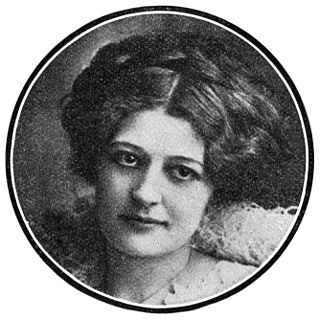
Betty Harte (1882–1965) was a leading lady during the heyday of the silent film era, starring in nine feature films and 108 short films. She is credited with writing four screenplays. She chose Betty Harte as her professional name in honor of her favorite author, Bret Harte.
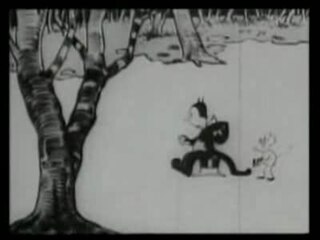
The Hearst-Vitagraph News Pictorial or Hearst-Vita graph was a short-lived company producing newsreels which were coupled with animated cartoons. It was established on 29 October 1915 by the Brooklyn-based Vitagraph Studios and the Hearst Corporation, and produced its first reel in February 1916, but folded in 1916. Previously, Hearst had produced newsreels together with the Selig Polyscope Company from 1914 on, and after the deal with Vitagraph ended Hearst teamed up with Pathé.
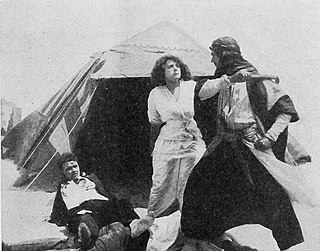
The Carpet from Bagdad is a 1915 American silent adventure film directed by Colin Campbell and based on Harold MacGrath's 1911 eponymous novel. In the story, Horace Wadsworth, one of a gang of criminals also planning a bank robbery in New York, steals the titular prayer rug from its Baghdad mosque. He sells the carpet to antique dealer George Jones to fund the robbery scheme. But the theft places both men and Fortune Chedsoye, the innocent daughter of another conspirator, in danger from the carpet's guardian.

The Dawson Film Find (DFF) was the accidental discovery in 1978 of 372 film titles preserved in 533 reels of silent-era nitrate films in the Klondike Gold Rush town of Dawson City, Yukon, Canada. The reels had been buried under an abandoned hockey rink in 1929 and included lost films of feature movies and newsreels. A construction excavation inadvertently uncovered the forgotten cache of discarded films, which were unintentionally preserved by the permafrost.
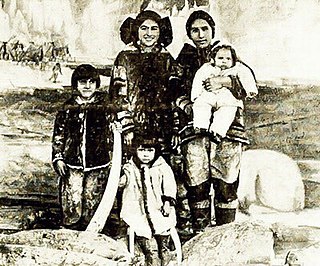
The Way of the Eskimo is a lost 1911 American silent drama film that portrayed the Inuit or "Eskimo" culture of northeastern Canada along the coast of Labrador. Directed by William V. Mong and produced by Selig Polyscope Company, this "photoplay" was based on a love story written by Columbia Eneutseak, a young Inuit woman who was born in the United States in 1893, in the "Esquimaux Village" exhibition at the World's Columbian Exposition in Chicago. She, fellow Inuit performer Zacharias Zad, and William Mong costarred in the film with a supporting cast that included members of Columbia's immediate family and other Inuit players. While this production was promoted in 1911 as being filmed on location in northern Canada, it was actually shot that year at the snow-covered port town of Escanaba, Michigan, along a frozen stretch of shoreline of Little Bay de Noc, which connects to Lake Michigan.

Otto F. Breitkreutz, universally known as Big Otto, was an American circus man and film producer during the early 20th century. He was called Big Otto because he weighed somewhere between 350–480 lb (160–220 kg) and was "big in heart and policy."

